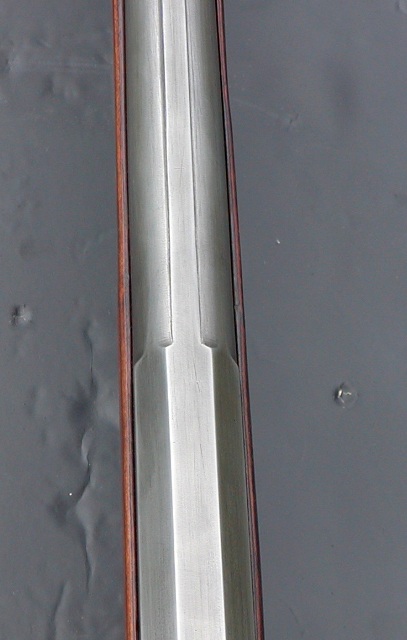Today I finished the second Fusil, a French Trade Gun, ('Type D"). It was a compilation of parts provided by Clay Smith. The stock is Walnut, the lock is from Larry Zornes and the barrel is from the Mold and Gun Shop. The stock was pre-carved and the parts needed proper fitting, as usual. But I had no issues with this build (except for wrecking the first butt plate).
I have had no exposure to French trade guns previous this build and didn't know what to expect. I immediately noticed differences between it and the Fusil de Chasse I recently made (parts from Pecatonica). The butt stock is straighter with less swoop than the Fusil de Chasse. The barrel is certainly much more narrow at the muzzel than the Colerain of the Fusil de Chasse, and the Trade Gun's barrel is tapered and, though wider at the breech, is much, much lighter and balances nicely.
Also, the lock on the Trade Gun is much heftier. I have not fired the gun yet but I think the lock will be fast and strong.
The Trade Gun had a lot of wood to remove on the forestock- the web was thicker than I would like, so I slimmed the forestock and exposed more than half of the barrel profile, as well as the ramrod. It certainly helped give the Trade Gun a more slim look.
The weight of both guns is similar- the Fusil de Chasse is 7 pounds, and the Trade Gun is at 6.5 pounds.
I finished the stock of the Trade Gun first with a light application of Boiled Linseed Oil and then after several days applied wiping varnish (3 sessions). It has a lovely color I think. The Fusil de Chasse is Curly Maple which I dyed dark and then applied Wiping Varnish and after thoroughly curing for three weeks cave it a nice Renaissance wax topcoat.
I am going to post better pictures of the Fusil Trade Gun soon, and hope to fire it in a week as the varnish cures.
I have had no exposure to French trade guns previous this build and didn't know what to expect. I immediately noticed differences between it and the Fusil de Chasse I recently made (parts from Pecatonica). The butt stock is straighter with less swoop than the Fusil de Chasse. The barrel is certainly much more narrow at the muzzel than the Colerain of the Fusil de Chasse, and the Trade Gun's barrel is tapered and, though wider at the breech, is much, much lighter and balances nicely.
Also, the lock on the Trade Gun is much heftier. I have not fired the gun yet but I think the lock will be fast and strong.
The Trade Gun had a lot of wood to remove on the forestock- the web was thicker than I would like, so I slimmed the forestock and exposed more than half of the barrel profile, as well as the ramrod. It certainly helped give the Trade Gun a more slim look.
The weight of both guns is similar- the Fusil de Chasse is 7 pounds, and the Trade Gun is at 6.5 pounds.
I finished the stock of the Trade Gun first with a light application of Boiled Linseed Oil and then after several days applied wiping varnish (3 sessions). It has a lovely color I think. The Fusil de Chasse is Curly Maple which I dyed dark and then applied Wiping Varnish and after thoroughly curing for three weeks cave it a nice Renaissance wax topcoat.
I am going to post better pictures of the Fusil Trade Gun soon, and hope to fire it in a week as the varnish cures.
Attachments
Last edited:

















